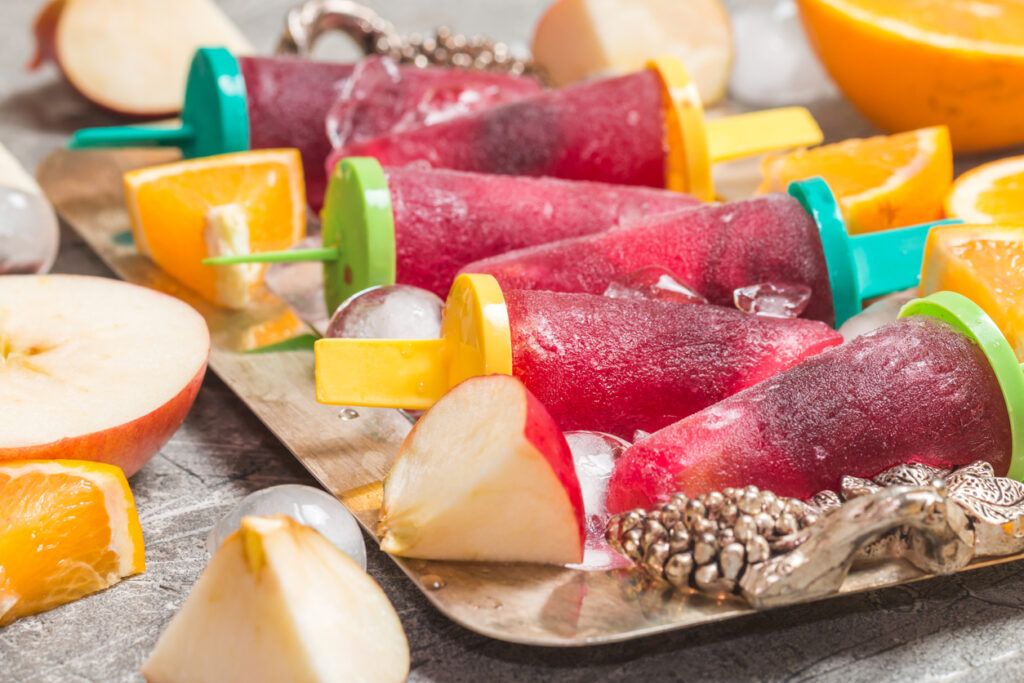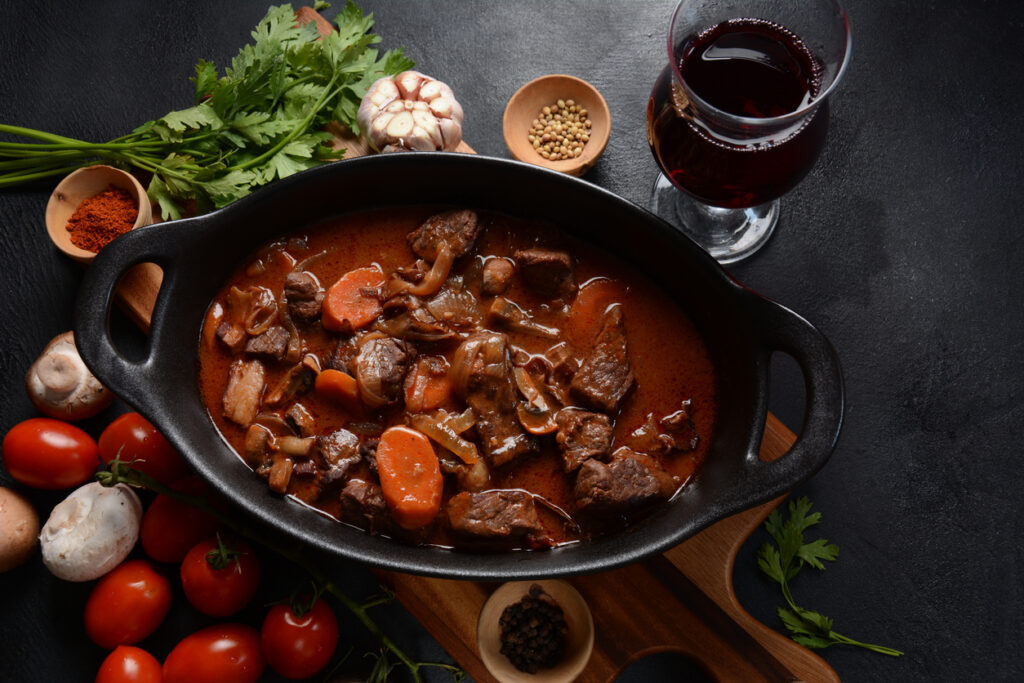While it originates from the warm mediterranean climate of Italy, moscato wine – which is derived from muscat grapes – is today produced in regions all over the world, from France to Australia.
Moscato is a sophisticated, lightly sparkling wine which has sweet hints of peaches, honeysuckle, rose water, and orange blossom and a low alcohol content compared with other wines.
This type of wine often has a lower acidity and a higher level of residual sugar which makes it sweeter in flavor.
About Moscato
The most popular variety of moscato wine is Moscato d’Asti which is commonly known as ‘frizzante’ in Italy. This sweet Italian wine comes from a region called Asti, in the Piedmont area in North Western Italy.
This wine is made from Moscato Bianco, the family of white muscat or muscat blanc grape which includes muscat blanc, Alexandria, and blanc à petits grains, which have been cultivated for hundreds of years.

DOCG certified Moscato Wines
Moscato d’Asti as well as Asti spumante (or simply Asti) is DOCG-certified, which means the wine is made in a specific region according to specific quality regulations using grapes from the family of the muscat grape.
DOCG stands for “Denominazione di origine controllata e garantita,” or “controlled and guaranteed designation of origin.”
Both of these Moscato variations can only be produced in Italy’s Piedmont region, where the Muscat or moscato grapes are able to thrive in the dry, sunny days and cool nights. They’re then harvested mid to late season depending on the muscat grape, variety and location.
Moscato Wine Varieties
Moscato d’Asti is the main variation of Moscato, and is a lightly sparkling, slightly sweet white wine with a low-alcohol content. It’s known as “frizzante.” Asti is another popular moscato white wine variety, and is usually known as “Asti Spumante.” It’s similar to Moscato d’Asti but has a higher alcohol content of around 9%.
Moscato di Pantelleria is an amber wine made on the island of Pantelleria, and there’s also a dessert version called “Passito”. This sweet wine is derived from dried grapes.

Moscato Rosa is a sweet red variety from the Trentino-Alto Aldige region of Italy, and has flavors of berries and warm spice.
American moscato wines can include white moscato which is similar to Moscato d’Asti, pink Moscato which is a rose version, red moscato, or sparkling moscato, which is similar to Asti Spumante.
Are you a white wine lover ? Most Moscato wines are white, and these are low in tannins and can have varying levels of sweetness, acidity and bubbles.
However, there are also red wine grapes in the muscat family as well as black muscat which can be used to make the less common red moscato wine which is rich with berry and floral notes.

Moscato flavors
Moscato wine, with its sweet and fruity flavors, has become a favorite among white wine lovers everywhere. But did you know that there are different varieties of Moscato that offer their own unique flavor profiles?
One such variety is the Moscato d’Asti, known for its light and delicate taste. With notes of peach, apricot, and honey, this particular Moscato boasts an irresistible sweetness without being cloying. Perfect for a warm summer evening or paired with a light dessert, the sweet flavors of Moscato d’Asti are sure to please even the most discerning palates.

Another intriguing variation is the Pink Moscato. With its vibrant pink hue and refreshing bubbles, this wine is as visually stunning as it is delicious. The flavor profile of Pink Moscato tends to be slightly sweeter than its other white wine counterpart, with hints of strawberry and citrus dancing on the taste buds. A wonderful choice for those who prefer their wines on the sweeter side or those looking to add a touch of whimsy to their next gathering, Pink Moscato offers a delightful twist on traditional white wines.

No matter which flavor profile you prefer, one thing is certain – there’s a Moscato out there waiting to captivate your senses. From light and delicate to bold and bubbly, these variations offer something for every palate. So why not raise a wine glass (or two!) of this delectable wine and embark on a journey through the flavors and aromas of Moscato?
A perfect dessert wine?
Moscato usually has a lower alcohol percentage (in the region of 5-6%), and along with its lighter body, this makes it a perfect accompaniment for sweet dishes and desserts. The sweet, slightly sparkling white wine pairs perfectly with apple or hazelnut desserts, meringue, and even brunch dishes like pancakes and coffee cake. Moscato is often sweet enough to be a dessert all on its own.

However, Moscato is not always drunk as a dessert wine. The sweetness and low alcohol content of Moscato d’Asti make it pair well with spicy food, as the sweetness will balance out the heat.
It goes well with dishes such as Sichuan beef, Thai crab curry, or spicy Cajun-style chicken wings, as well as salty snacks like cured meats, nuts, or blue cheese.

Thanks to their sweet and fruity profile, Moscato wines are also a common base for sangria. They perfectly blend and complement oranges, peaches, and berries while providing a hint of sweetness. Pink Moscato or Red Moscato is often used in Sangria, in order to achieve that perfect color.
Is Moscato or Pink Moscato sweeter?
Pink Moscato is made with Merlot, so it’s generally less sweet than its traditional counterpart, which is made solely with sweet muscat grapes.
Pink Moscato is perfect for people who want that bright citrus kick with a little less sweetness. Depending on the amount of Merlot added, Pink Moscato is also great in various summer cocktails.

Is Moscato suitable for cooking?
Moscato wine, with its moderate sweetness and vibrant fruity flavors, can be a delightful addition to many recipes. Its refreshing notes of peach, apricot, and orange blossom make it particularly suitable for desserts like poached fruits or fruit salads. The light body and low alcohol content of Moscato wines also make it a great ingredient for cooking delicate seafood dishes or pairing with spicy cuisine.

However, when using Moscato in savory dishes, it’s crucial to balance its sweetness properly. To avoid overpowering the dish with sugars, reducing the wine is a great technique to intensify its flavor while minimizing the sugar content. This reduction can add depth to sauces or braised meats like pork tenderloin or chicken Marsala.
In summary, while Moscato wine may not be the go-to choice for every recipe due to its sweetness, it certainly has its place in the kitchen. From enhancing dessert creations to bringing complex flavors to savory dishes through reductions and pairings, don’t shy away from experimenting with this versatile wine varietal in your culinary adventures; you may just discover a whole fresh new world of taste possibilities!
What wines are similar to Moscato?
Pinot Grigio is a good dry alternative to Moscato, but it still offers those bright citrus fruity notes throughout. If you prefer a frizzy alternative, Prosecco will provide aromatic flavors of peach and also has a sweetness associated with Moscato wines.

Many sweet sparkling wines will share similar attributes to Moscato, so you shouldn’t have to look too far to find an alternative.
Final Verdict
Moscato is a fruity, slightly sparkling wine that is the perfect sweet treat – either alongside your dessert or by itself. That said, this fruit-forward wine can also pair perfectly with a spicy meal, as the sweetness can balance out the harshness of the spices.
Moscato wines also comes in red and rose varieties, which will provide a less sweet alternative to the traditional Moscato d’Asti.
However, while this wine will be commonly associated with dessert, it’s not only for after dinner. Enjoy Moscato with your meal, at brunch, lunchtime, or simply enjoy it by itself as a refreshing drink on a hot summer’s day.

